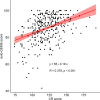Cognitive-Cognitive Dual-task in aging: A cross-sectional online study
- PMID: 38848421
- PMCID: PMC11161073
- DOI: 10.1371/journal.pone.0302152
Cognitive-Cognitive Dual-task in aging: A cross-sectional online study
Abstract
The prevalence of neurodegenerative disorders, particularly dementia, is on the rise across many countries worldwide. This negative trend calls for improving our understanding of cognitive aging. While motor-cognitive dual-task approaches have already been proven valuable for clinical diagnosis, comparatively less research is available on the application of Cognitive-Cognitive Dual-Tasking (CCDT), across several cognitive domains. Moreover, there is limited understanding about how healthy aging affects performance in such dual-tasks in the general population. CCDT entails engaging individuals in multiple cognitive tasks simultaneously and holds promise for remote e-Health interventions. In this cross-sectional study, our objective was to evaluate the suitability of a newly developed, self-administered, online tool for examining age-related differences in memory performance under dual-tasking. 337 healthy adults aged 50-90 underwent a visual memory test (Memo) under both single and dual-task conditions (attend to auditory letters). Additional measures included questionnaires on subjective memory complaints (MAC-Q), on cognitive reserve (CR), and a cognitive screening (auto-GEMS). As expected, the accuracy of visual memory performance exhibited a negative correlation with age and MAC-Q, and a positive correlation with CR and auto-GEMS scores. Dual-tasking significantly impaired performance, and its detrimental effect decreased with increasing age. Furthermore, the protective effect of cognitive reserve diminished with advancing age. These findings suggest that the commonly observed age-related increase in dual-task costs is not universally applicable across all tasks and cognitive domains. With further refinement, a longitudinal implementation of this approach may assist in identifying individuals with a distinct cognitive trajectory and potentially at a higher risk of developing cognitive decline.
Copyright: © 2024 Contemori et al. This is an open access article distributed under the terms of the Creative Commons Attribution License, which permits unrestricted use, distribution, and reproduction in any medium, provided the original author and source are credited.
Conflict of interest statement
The authors have declared that no competing interests exist.
Figures








References
-
- Iorio C, Contemori G, Bonato M. The impact of Dual-Tasking on mnestic performance in normal aging. 2021. [cited 28 May 2023]. doi: 10.31234/OSF.IO/Z86TJ - DOI
MeSH terms
LinkOut - more resources
Full Text Sources
Medical
Research Materials

